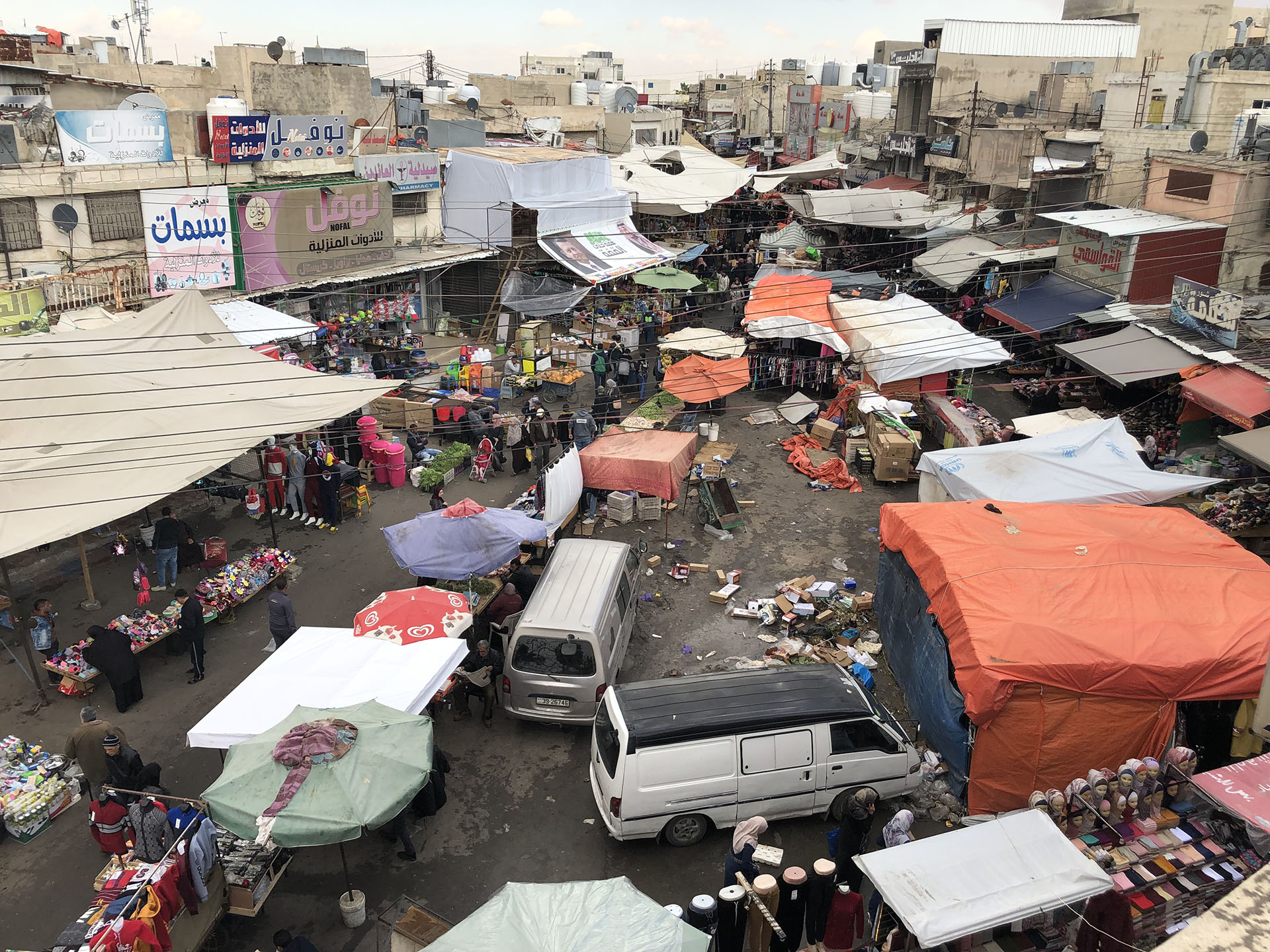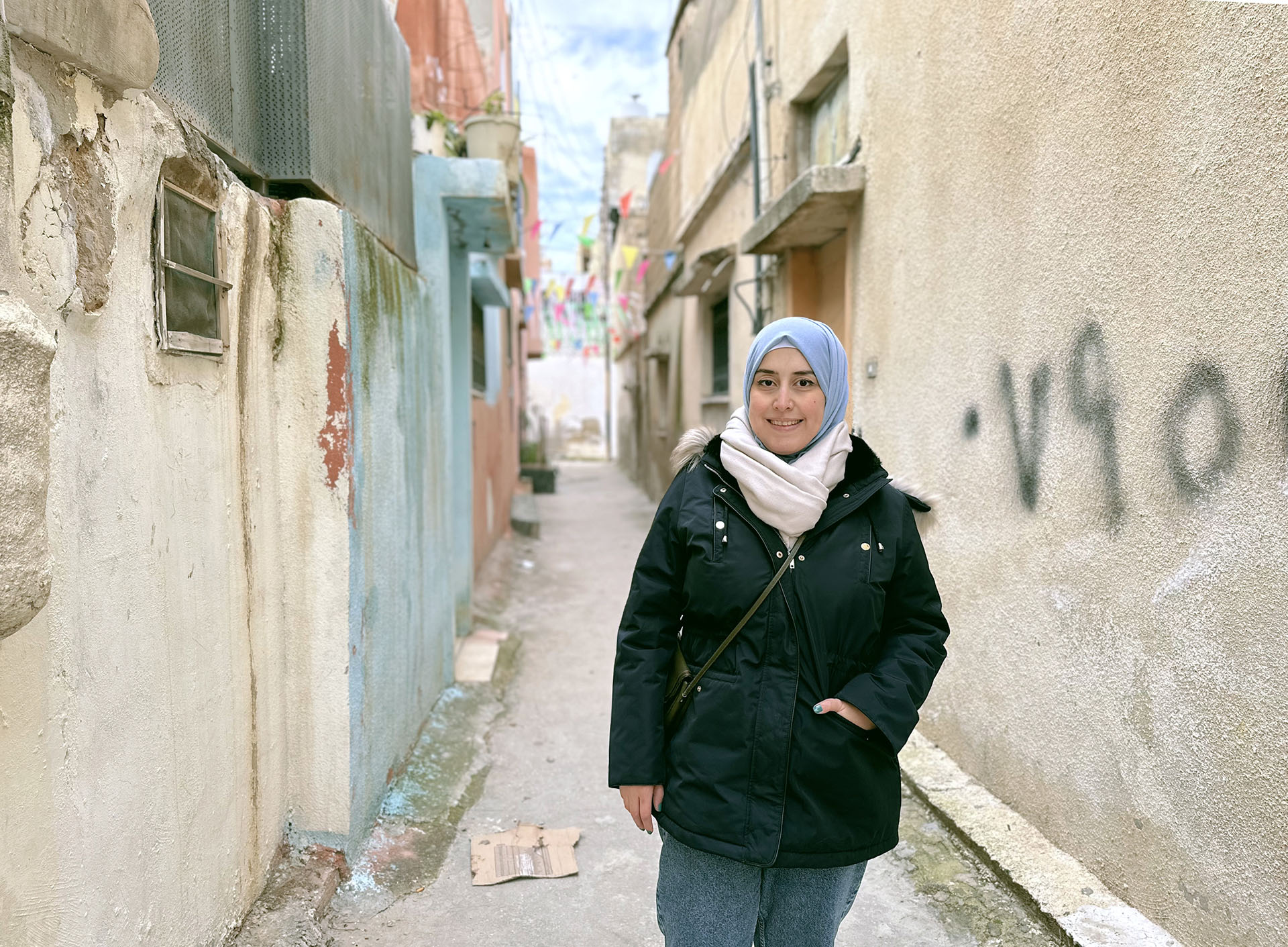Of the roughly 11 million people who live in Jordan, over 2 million are registered Palestinian refugees: a result of violent displacement during ‘Al Nakba’ (the catastrophe) in 1948. In the decades since, many refugee camps have transformed into urbanized neighbourhoods. But their official status has not changed. Nama’a Qudah spent her PhD studying one such camp and talking to its people. “It has existed for so long that you hardly see its boundary with the city. How do residents define their identify?”
Why did you decide to study Architecture?
“I was always interested in ‘why’: why do cities look and function the way they do? My mother is an architect. When my siblings and I played with the model of her graduation project, rearranging the toothpick trees, she would say: “Now you are also designers!” While we lived in Saudi Arabia, she designed our home in Jordan: I remember visiting the construction site. After my studies, I worked as a lecturer in Jordan for four years. But eventually I realised that research would give me more opportunities to contribute to society.”
Why did you choose this topic for your PhD?
“While living and working in Jordan, I was part of a team that volunteered to renovate shelters in a Palestinian refugee camp. This way, my colleagues and I could employ our expertise to help the inhabitants. Al Wehdat Camp has existed since 1955: almost as long as the country of Jordan itself. This sparked my curiosity about the interactions between the camp and the city which envelops it. But there is also a personal connection. My mother is Palestinian, and her great aunt used to live in Al Wehdat camp with her family. I remember visiting the camp to buy a party dress when I was 11.”
Nama’a visited the camp for three months each summer, five years in a row. She photographed the official boundary of the camp, then created diagrams and sketches and collages. She also talked to many current and past inhabitants.
A brief introduction to Al Wehdat Camp
Al Wehdat, officially ‘Amman New Camp’, is part of Jordan’s capital, Amman. It is the second largest of Jordan’s ten recognized Palestinian refugee camps, with a registered population of 57.000 in an area of 0.48 km2. Uniquely, it was built out of modular concrete housing: Al Wehdat translates to ‘the units’. The camp is still managed by the UN, meaning inhabitants pay no rent and receive some education and healthcare support. But the majority have Jordanian citizenship and are free to relocate. Those who move into the surrounding city often describe their dwellings as the ‘new camp’.
Which findings surprised you?
“This project changed me. Before, I had an idealised and abstract view of Palestinian refugee camps. But now I realise that they are also spaces of everyday life, albeit under difficult conditions. There is no physical barrier around Al Wehdat Camp: people, goods, and services constantly cross its boundaries. But still those boundaries shape both the perspectives and the legal status of inhabitants. Many of them identify simultaneously as Palestinian and Jordanian, but most of all as ‘people of Al Wehdat’.”
What is next for you?
“This year has been very difficult. I watched as acts of genocide were committed in Gaza while being confronted in my surroundings by apathy, misunderstanding, and even hostility. But still, I want to continue to talk about and study Palestine. I previously put on an exhibition of my collages at Bouwkunde, and I hope to get more chances to present my work. One bright spot for me were the interactions with students at the encampment in TU Delft. They impressed me with their non-typical educational methods such as debates, movie nights, and discussions.”
What should we learn from your thesis?
“Generally, I hope my thesis clarifies misunderstandings and motivates people to learn more. And I hope that it shows the value of an interdisciplinary approach in architectural research. But there are also two specific lessons. First: these camps are the perfect example of how we can never understand the present situation without studying its past. And second: we need to give people on the margins a platform to talk about their lives and needs, and learn by listening to their stories without prejudice.”
More information
Nama’a Qudah will defend her thesis, ‘In Search of Al Wehdat Camp: A Study of Paths, Edges and Walls and their Production of Transient Territories in Palestinian Refugee Camps’, on 9 September.
All images were made by and are owned by Nama’a Qudah. You can find more photos she took during her PhD on the Instagram page @wehdatcamp.
You can read a selection of stories Nama’a collected in the camp and see some of her collages here.



